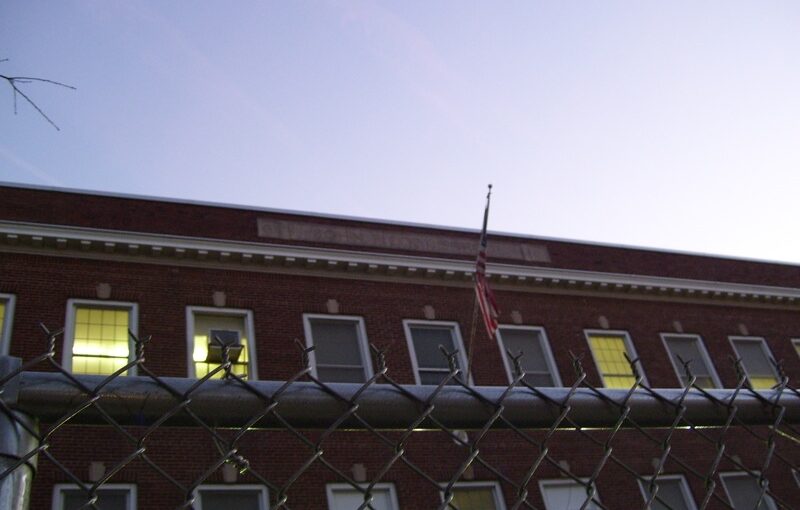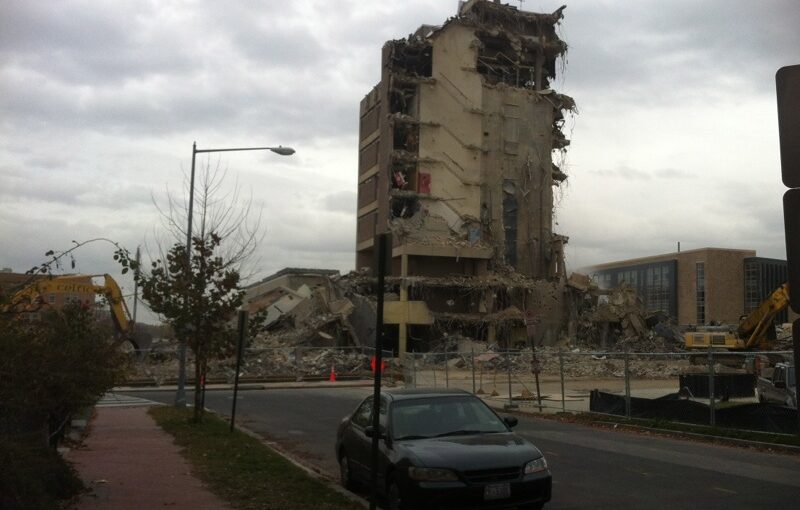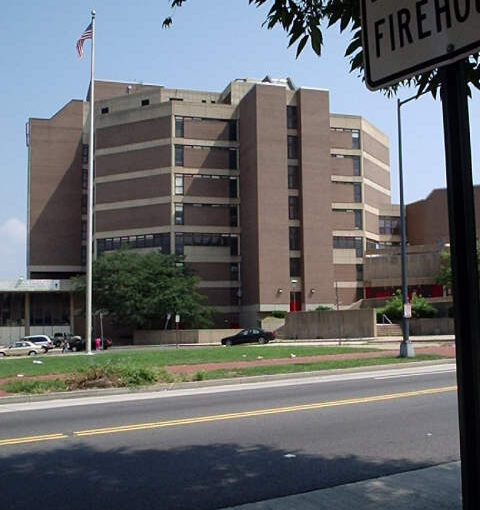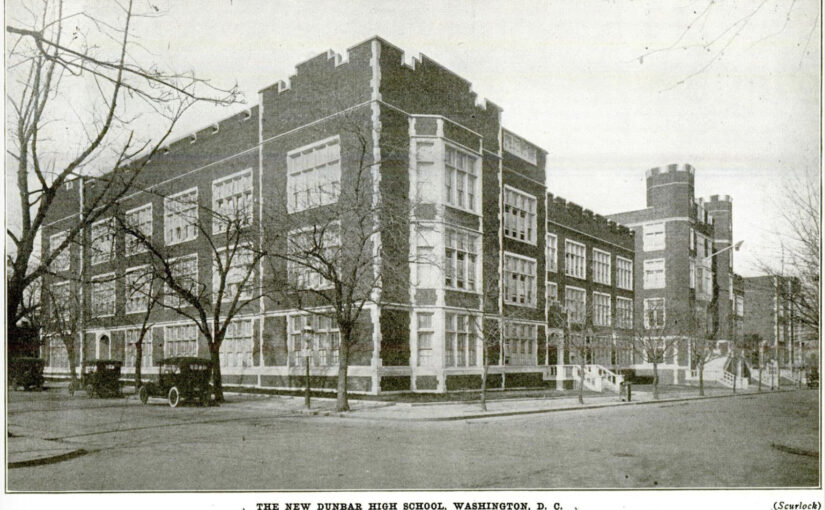I could make commentary. But I won’t. I’ve lacked skin in this game for about 4 years now.
Category: Education
Shaw School Urban Renewal- Elementary Schools Map 1968
I believe I’ve posted this before. Not sure. These are the elementary schools of Shaw.
Slater and Langston seem to be joint schools.
Memory Lane- John Cook School now Mundo Verde at dusk
Memory lane is the series where I go through my old photos of the Truxton Circle (or Shaw) neighborhood and reflect.
The John Cook School is the building that Mundo Verde PCS now occupies. When the photos were taken in 2007, I believe the school had recently closed, but the city kept the lights on.
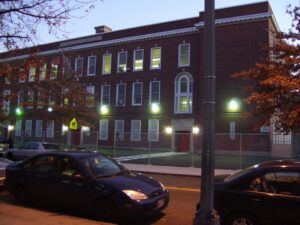
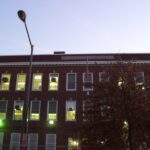
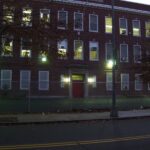
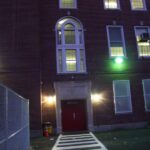
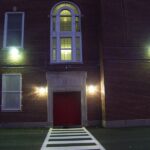
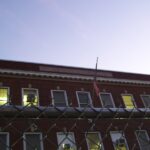
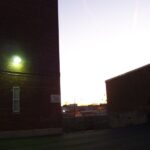
Black History Month 2024: First Class- Ch. 17 Back to the Future
This year for Black History Month we’ll review chapter by chapter Alison Stewart’s First Class: The Legacy of Dunbar, America’s First Black Public High School. This is more Truxton Circle related then this blog’s previous annual looks at Shaw resident and founder of Negro History Week (later Black history month) Dr. Carter G. Woodson’s Mis-Education of the Negro. As Dunbar High School is located in Truxton Circle currently taking up all of Square 554.
We’ve finally made it to the last chapter of the book and from the description the students and staff are still in the 1977 Dunbar building. It’s still hovering around the 2010-2011 academic year. The new building was in the process of being built, there was hope for the future of Dunbar.
There are three views of the school. The first takes place in Matthew Stuart’s English class. The second with Dunbar’s football team on Cardozo’s field. The third is back at Dunbar, in the basement.
It’s the start of the class in Mr. Stuart’s room and students are making their way in. Despite a rule against cell phones, one student came in speaking loudly on his. We’re also told less than half of the students enrolled in his class were present. A picture is painted of what Dunbar’s academics are like. Left unsaid is that they are a far cry from Dunbar’s beginnings.
Next, because of the construction for Dunbar’s new field and the change of layout of the school, the football team was at another school’s playing field. Coach Jerron Joe was a former Dunbar student (2004) and knew of other Dunbar alumni who moved on to the NFL. But Coach Joe did more than coach, he was also a mentor.
The last has us in the basement for girl’s track. This time with Coach Marvin Parker, and like Coach Joe, he’s a mentor to the girls, some of whom live under difficult circumstances. He wanted to break the cycle of poverty for girls, which at the time meant babies having babies. We’re told of a success story, Angela Bonham, who transferred to Dunbar and then excelled on the track and got a 4 year scholarship to GWU. Later we’re also told how Dunbar was essentially ignoring Title IX in favor of football, and Parker was an advocate for getting money for girl’s sports.
Dunbar may never be the academic powerhouse for Black education as it once was. But it is well known for it’s football team. Maybe it’s next chapter will be with athletics over academics. That’s fair. When I was looking at predominately Black private schools in the DC area, I stumbled upon a football schedule where a school I never heard of and couldn’t find was playing against DeMatha. What little I could find seemed to say the whole purpose of the school was for boys to play football. There are parents who value a school based on the school’s athletics. As a parent myself, I’m not going to fault another parent for their values, even if they strongly differ from mine. During the Covid shutdowns, there were Black parents who were very concerned about their sons’ high school sports careers. I found no fault with them.
When I was at the hair dressers getting my hair did, someone mentioned Dunbar. My first thought was for their dismal academic record. However, the barbers and the hairdressers spoke glowingly and lovingly about their football team. And again, I found no fault in them.
Let me conclude and get back to the book. This is a good history of Dunbar. It is not 100% about Dunbar. The author provides a lot of background information, necessary to understand and appreciate the parts that are about the school. I would highly recommend it to anyone who wants to learn about the great history of the school beyond a Wikipedia entry.
Black History Month 2024: First Class- Ch. 16 New New School
This year for Black History Month we’ll review chapter by chapter Alison Stewart’s First Class: The Legacy of Dunbar, America’s First Black Public High School. This is more Truxton Circle related then this blog’s previous annual looks at Shaw resident and founder of Negro History Week (later Black history month) Dr. Carter G. Woodson’s Mis-Education of the Negro. As Dunbar High School is located in Truxton Circle currently taking up all of Square 554.
In late 2011 the wheels started moving to create the 3rd Dunbar building. It was supposed to be the complete opposite of the 2nd Dunbar building. That was a success. The old 1970ish building was a Brutalist prison like structure and the new, current building looks like it belongs on a college campus. It is well lit, has lots of glass, open in a good way.
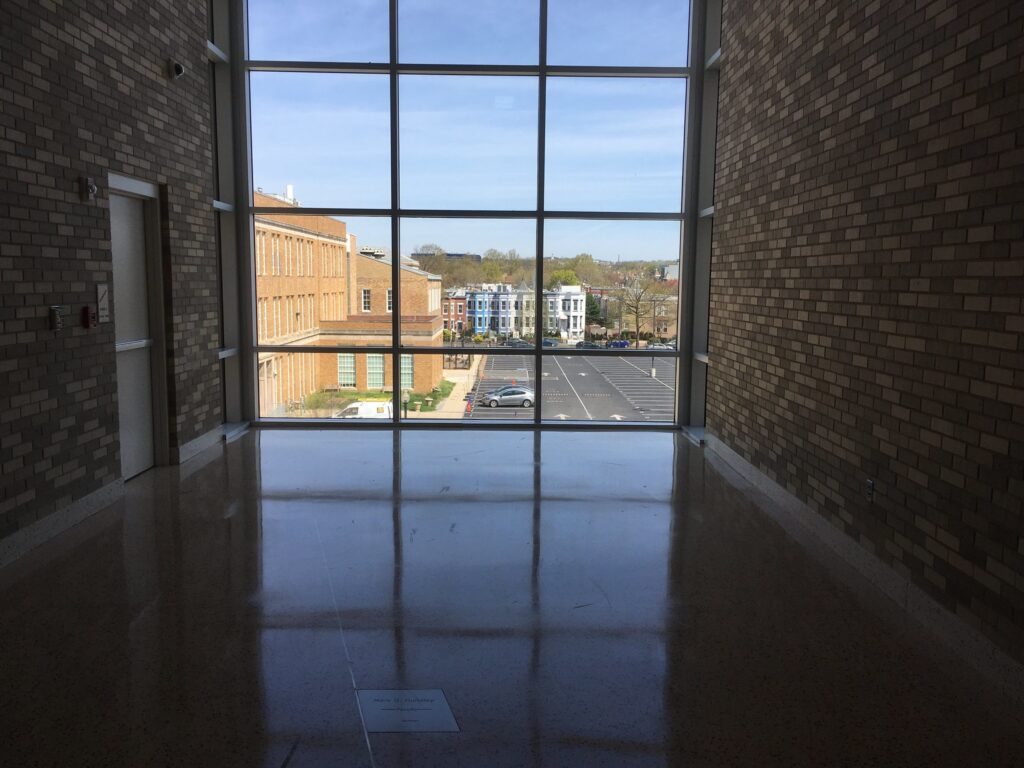
One part of the DC government to take credit for this change for the better is the Office of Public Education Facilities Modernization (OPEFM) which was formed in 2007. OPEFM wanted to have a nod to the 1916 building, which there is. The old building was along 1st St, the 1977 was closer to New Jersey Avenue. The current building is at the corner of 1st and N St NW.
The new building was planned to reflect current values but also make alumni happy. It was planned to be a LEED building. It was in compliance with the Americans with Disabilities Act. There was space for metal detectors… we’re not about to forget about the crime. You kidding, we’re still in Shaw. There were nods to great Dunbar alumni built into the building.
Not mentioned in the chapter was another great change with the new building. O Street was reopened. Dunbar II ate O Street. It was not there. The neighborhood gained some extra street parking. It was good.
Black History Month 2024: First Class- Ch. 15 The Fall
This year for Black History Month we’ll review chapter by chapter Alison Stewart’s First Class: The Legacy of Dunbar, America’s First Black Public High School. This is more Truxton Circle related then this blog’s previous annual looks at Shaw resident and founder of Negro History Week (later Black history month) Dr. Carter G. Woodson’s Mis-Education of the Negro. As Dunbar High School is located in Truxton Circle currently taking up all of Square 554.
So it’s 2010 and Dunbar is going down. In flames. Figuratively.
Literally it was a hot mess. In the previous chapter the building was not only ugly as sin, it was also in meh to poor condition in need of serious repairs. The open classroom concept worked against classroom management and made it hard to teach. In a school. Where the whole point is to teach students. Crime was a problem. The crime around the school was also inside. Drugs and gambling were inside. And there was a publicized sexual assault of a student in a stairwell.
Mayor Fenty lost to Vincent Gray in 2010. With that polarizing Superintendent Michelle Rhee was not able to remain, even after being heroically portrayed in Waiting for Superman. Gray removed a lot of Fenty’s work, including the Friends of Bedford managing Dunbar. Rhee was replaced by Kaya Henderson and the FoB were replaced by interim principal Stephen Jackson.
Alumni did not seem to care for Jackson because he was a FoB hire. They did not care for the New York connection. Jackson survived that and was able to stick around for the plans for a 3rd Dunbar building.
Black History Month 2024: First Class- Ch. 14 From Bed-Stuy to Shaw
This year for Black History Month we’ll review chapter by chapter Alison Stewart’s First Class: The Legacy of Dunbar, America’s First Black Public High School. This is more Truxton Circle related then this blog’s previous annual looks at Shaw resident and founder of Negro History Week (later Black history month) Dr. Carter G. Woodson’s Mis-Education of the Negro. As Dunbar High School is located in Truxton Circle currently taking up all of Square 554.
The Bed-Stuy in the chapter title refers to a New York neighborhood from which the group Friends of Bedford hailed. It was the earlier part of the Fenty mayoral administration, which meant the Superintendent was Michelle Rhee. This was an environment for trying new things, hiring consultants, throwing more spaghetti at walls. The pasta in this case was Friends of Bedford who were tasked with fixing schools like Dunbar High.
The school building was in poor shape. The Friends of Bedford noted the unsatisfactory ADA compliance, bad interiors, dirty carpets, an unstable aged roof and ‘fair’ electrical system. FoB had a Summer Blitz where there was cleaning and fixing. Unfortunately, a lot of Dunbar’s history got ditched in the frenzy. Yeah, that happened.
In 2010 there was a very heated race for the mayor and Fenty was replaced by Councilman Vincent Gray. The chapter pointed out that Gray did not like Rhee. A lot of people did not like Rhee. I suspect some did not like her because she wasn’t Black. But many more probably didn’t like her because of all the school closures and other shake ups.
Gray was a Dunbar graduate (1959), but a post-desegregation Dunbar grad. So he didn’t have the same love or romance for the school as the legally segregated Dunbar. He was asked to be the commencement speaker for the class of 2010. Fenty was on the same platform. Both addressed the students. Fenty was booed.
Black History Month 2024: First Class- Ch. 13 Children Left Behind
This year for Black History Month we’ll review chapter by chapter Alison Stewart’s First Class: The Legacy of Dunbar, America’s First Black Public High School. This is more Truxton Circle related then this blog’s previous annual looks at Shaw resident and founder of Negro History Week (later Black history month) Dr. Carter G. Woodson’s Mis-Education of the Negro. As Dunbar High School is located in Truxton Circle currently taking up all of Square 554.
This chapter starts in 2008. It’s the Fenty era and Michelle Rhee is the first, and so far only, Asian American DC school chancellor. The chapter name refers to President Bush’s ‘No Child Left Behind’ program.
The author covers the poor education students received in 2008. It didn’t improve. I covered Dunbar’s PARCC scores in 2019 and they are depressing.
PARCC by Race
| PARCC Scores 2018-19, % meeting & exceeding expectations | |||||
|---|---|---|---|---|---|
| Black | White | Hispanic | Asian | ||
| ELA 2018-19 | 16.5% | N/A | n<10 | N/A | |
| Math 2018-19 | .5% | N/A | n<10 | n<10 | |
| Males ELA | 13.4% | N/A | n<10 | N/A | |
| Males Math | .9% | N/A | n<10 | n<10 | |
ELA- basically covers English and Language Arts, that would be reading and writing. And Math is math, numbers, adding, subtracting, figuring out sales tax or a 20% tip. Less than 1% of Dunbar students were proficient in Math.
The chapter covers the school from the 1980s to the aughts. The author mentions the school’s challenges as well as a few success stories as it is not all doom and gloom, despite dismal academics. But there was a clear academic and cultural difference between pre-desegregation Dunbar and post.
That difference also showed up in a division in the alumni association. The old Dunbar alumni who were held to higher standards and expectations had trouble connecting with the younger alumni. It is not as if the Old Dunbar did not help the New Dunbar students. There were scholarships and a story about a student who was accepted into Amherst College revived a Amherst-Dunbar connection and money flowed to the student.
Black History Month 2024: First Class- Ch. 12 New School
This year for Black History Month we’ll review chapter by chapter Alison Stewart’s First Class: The Legacy of Dunbar, America’s First Black Public High School. This is more Truxton Circle related then this blog’s previous annual looks at Shaw resident and founder of Negro History Week (later Black history month) Dr. Carter G. Woodson’s Mis-Education of the Negro. As Dunbar High School is located in Truxton Circle currently taking up all of Square 554.
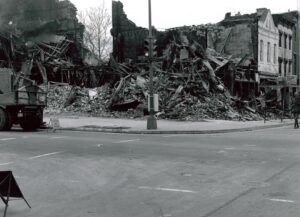
This chapter starts with the 1968 riots which pretty much destroyed much of 9th and 7th Street in Shaw. Yes, other neighborhoods experienced damage too, but we’re focusing on Shaw. The damage lasted 30 years. Whatever plans for the Shaw School Urban Renewal Area took on a new spirit after the riots and redoing Dunbar was part of it.
There were pre-riot plans for the Dunbar facility. There was a modernization plan to make it larger than Eastern High School. After the riot the School Board decided the building needed to be torn down.
As the 1970s approach Dunbar was a completely different school. Gone were the high standards and expectations of earlier years. There was a mix and range of students. And there were drug dealers around the neighborhood.
This chapter gives some detail about the prison like structure that loomed on Square 554 for 30 years. The new Dunbar Senior High School would be modern. It had open classrooms. I’m sure that idea looked great on paper.
Of course Dunbar alumni fought the good fight and tried to save the original 1916 building. Senator Brooke (mentioned in the previous chapter) lent his support for saving the old building. Apparently the building was recognized as an historic landmark. The alumni even took the city to court in 1977. June 2, 1977 the city began to knock down the old Dunbar building.
Black History Month 2024: First Class- Ch. 11 Elite versus Elitism
This year for Black History Month we’ll review chapter by chapter Alison Stewart’s First Class: The Legacy of Dunbar, America’s First Black Public High School. This is more Truxton Circle related then this blog’s previous annual looks at Shaw resident and founder of Negro History Week (later Black history month) Dr. Carter G. Woodson’s Mis-Education of the Negro. As Dunbar High School is located in Truxton Circle currently taking up all of Square 554.
The first half of the chapter is about all the great graduates of Dunbar. Jazz pianist Billy Taylor (1939) and Senator Edward William Brooke III (1936).


The second half has Dunbar going through the 1960s and a tension of philosophies. To tell that story the focus is Madison Tingor, a teacher who started at Dunbar in the 1930s and in the 60s was given a chance to be the assistant principal of the formerly all-white Eastern High School. It was the philosophy and outlook that he brought from Dunbar vs the 60s Afrocentric strivers.



